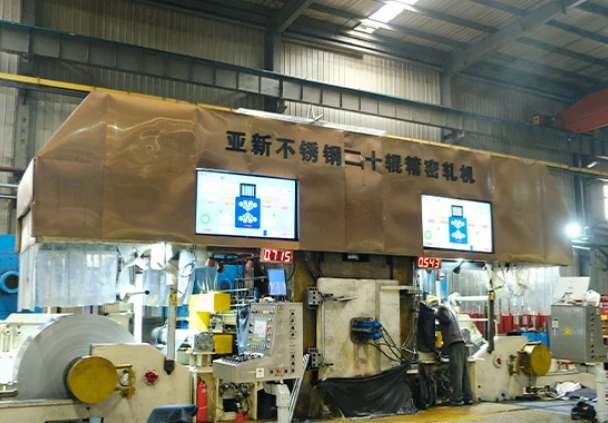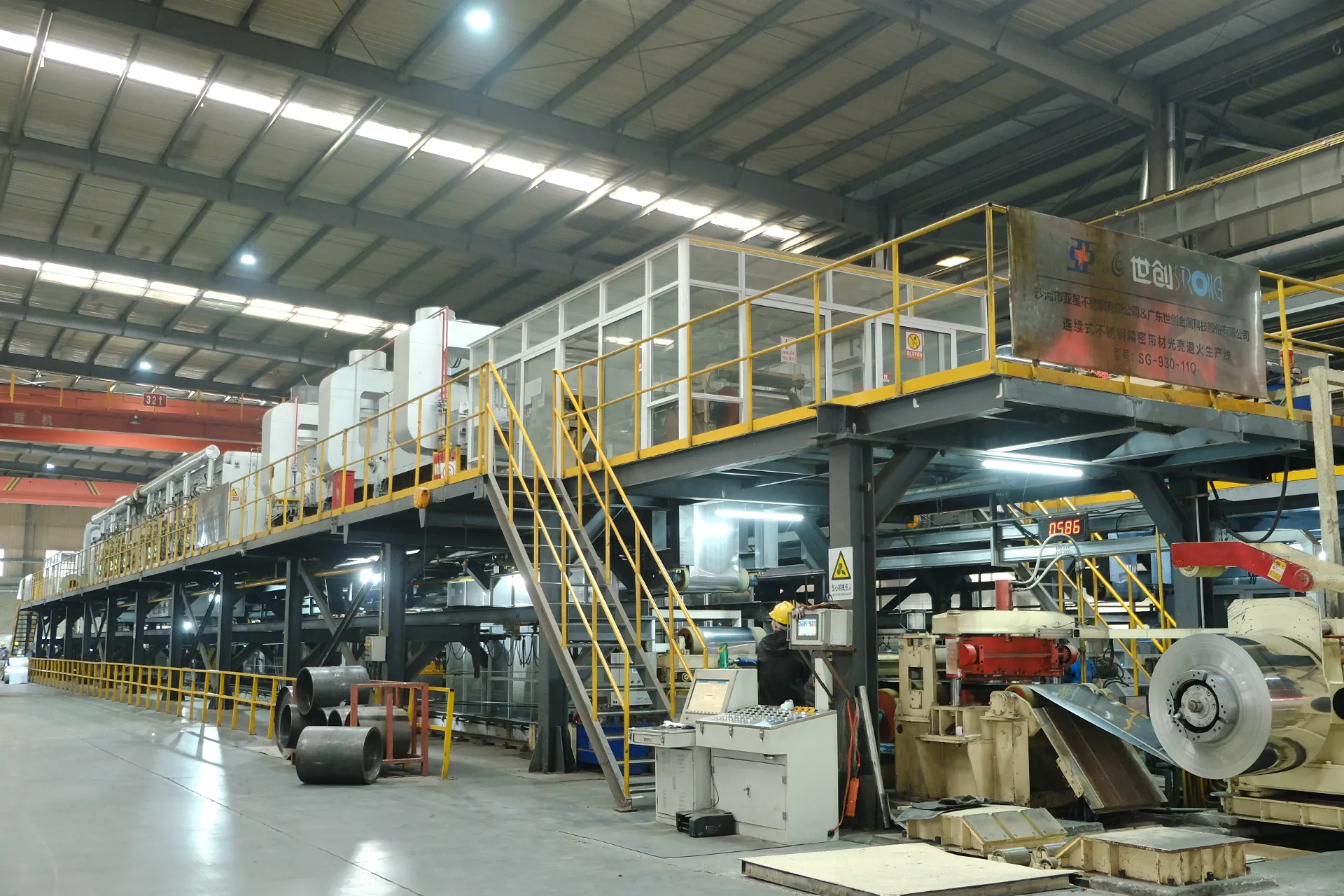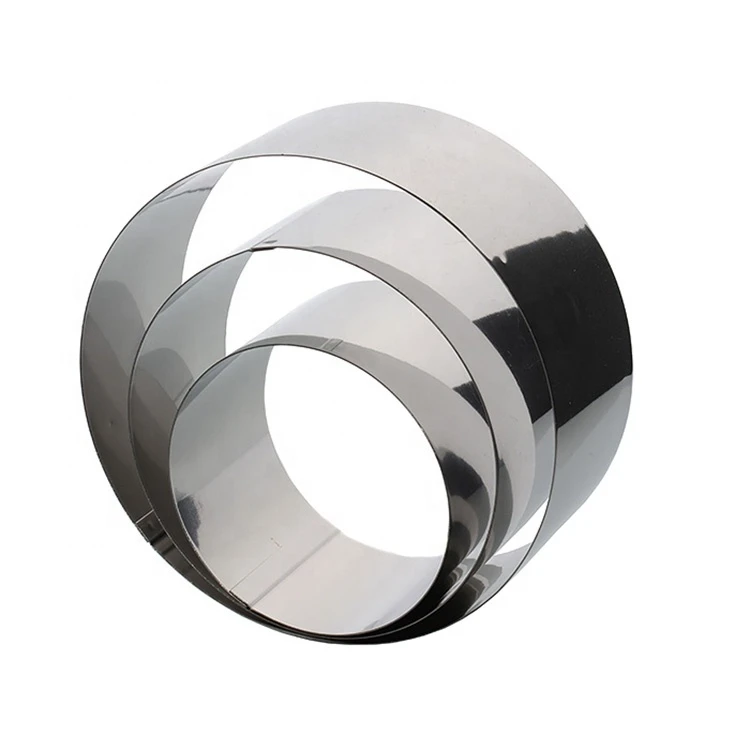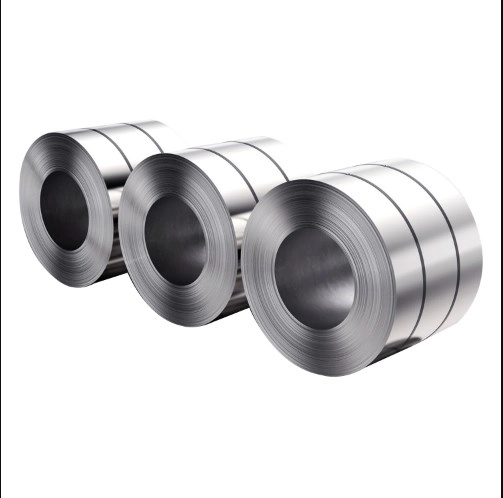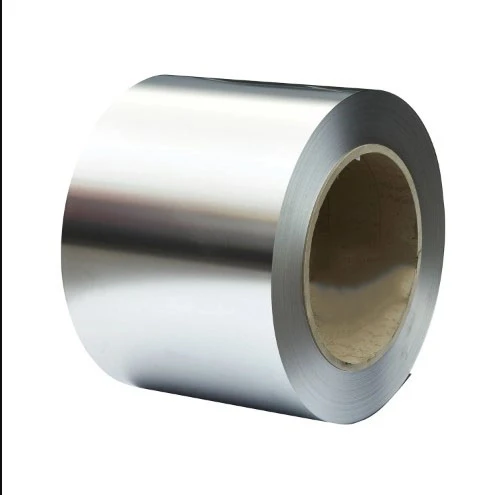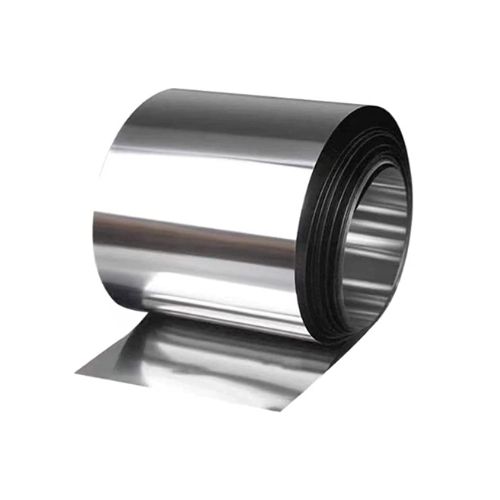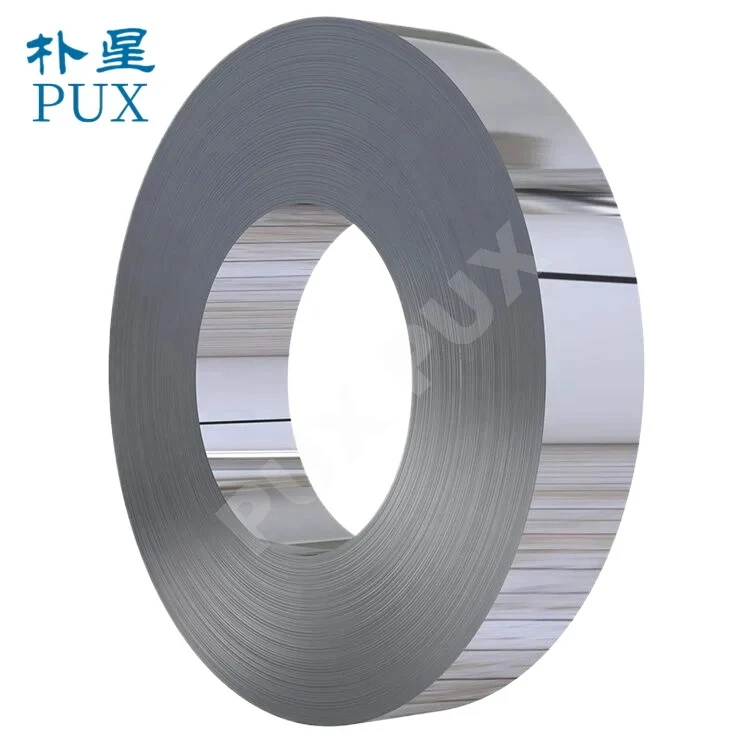products
Stainless steel strip is widely used across industries due to its corrosion resistance, strength, and formability. In construction, it serves as cladding material for modern architectural facades and roofing. The automotive industry utilizes precision strips for exhaust systems, trim components, and fuel lines. Electronics manufacturers rely on thin-gauge strips for connectors, springs, and shielding components.
Food processing equipment incorporates stainless strips for hygienic work surfaces and conveyor systems. Medical applications include surgical instruments and implantable device components. The strip's excellent weldability and surface finish also make it ideal for kitchen appliances, chemical containers, and decorative trims. Available in various grades (304, 316, etc.) and finishes (brushed, mirror, matte), stainless steel strips meet demanding technical specifications while maintaining aesthetic appeal in visible applications.
-
Cold Rolled 201/304/202/316 Grade Stainless Steel Coil/Strip/Sheet
The 201 and 304 stainless steel strips are distinct alloys with different compositions.
- 201 Stainless Steel Strip: It is a lower-cost alternative to 304, characterized by manganese, nitrogen, and nickel content. While it offers good corrosion resistance, it may not be as corrosion-resistant as 304. It's often used in applications where cost is a primary consideration.
- 304 Stainless Steel Strip: This is a widely used austenitic stainless steel known for its excellent corrosion resistance, high-temperature strength, and versatility. It contains chromium and nickel, providing durability and a polished appearance. 304 is commonly used in various industries, including food processing, architecture, and kitchen appliances.
The choice between 201 and 304 depends on the specific requirements of the application, considering factors such as corrosion resistance, cost, and mechanical properties.
- 202 Stainless Steel Strip: This is a type of austenitic stainless steel, similar to 201 but with increased nickel content. It offers improved corrosion resistance compared to 201, making it suitable for certain applications. However, it generally doesn't match the corrosion resistance of 304 or 316 stainless steel.
- 316 Stainless Steel Strip: Known as a marine-grade stainless steel, 316 contains molybdenum, enhancing its corrosion resistance, especially in aggressive environments. It is resistant to corrosion from acids, chlorides, and seawater, making it suitable for applications in marine, chemical, and medical industries where high corrosion resistance is crucial.
The choice between 202 and 316 depends on the specific environmental conditions and performance requirements of the application. While 201 may offer cost advantages, 316 is chosen for its superior corrosion resistance in demanding settings.
Item:Stainless Steel Strip
Material:Stainless steel 201/202/304/316
Thickness:0.1-2mm
Surface Technics:2B/BA/polished/fogging surface
Quality Standard:Certificate of conformity
Packaging:Packing shall depend on the customer's requirements
Applications:Stainless steel strip produced by Hebei Yaxin Stainless Steel Products Co.,Ltd is extensively applied in kitchenware products,glass lid,Stainless Steel Tubes,hose clamps,coil springs ,measurement instrument fabrication,armoured cable, Electronic Products and Electro- parts etc.
-
Thickness 0.1-2mm 201/304/202/316 Grade Stainless Steel strips Cold Rolled Steel coils
The 201 and 304 stainless steel strips are distinct alloys with different compositions.
- 201 Stainless Steel Strip: It is a lower-cost alternative to 304, characterized by manganese, nitrogen, and nickel content. While it offers good corrosion resistance, it may not be as corrosion-resistant as 304. It's often used in applications where cost is a primary consideration.
- 304 Stainless Steel Strip: This is a widely used austenitic stainless steel known for its excellent corrosion resistance, high-temperature strength, and versatility. It contains chromium and nickel, providing durability and a polished appearance. 304 is commonly used in various industries, including food processing, architecture, and kitchen appliances.
The choice between 201 and 304 depends on the specific requirements of the application, considering factors such as corrosion resistance, cost, and mechanical properties.
- 202 Stainless Steel Strip: This is a type of austenitic stainless steel, similar to 201 but with increased nickel content. It offers improved corrosion resistance compared to 201, making it suitable for certain applications. However, it generally doesn't match the corrosion resistance of 304 or 316 stainless steel.
- 316 Stainless Steel Strip: Known as a marine-grade stainless steel, 316 contains molybdenum, enhancing its corrosion resistance, especially in aggressive environments. It is resistant to corrosion from acids, chlorides, and seawater, making it suitable for applications in marine, chemical, and medical industries where high corrosion resistance is crucial.
The choice between 202 and 316 depends on the specific environmental conditions and performance requirements of the application. While 201 may offer cost advantages, 316 is chosen for its superior corrosion resistance in demanding settings.
Item:Stainless Steel Strip
Material:Stainless steel 201/202/304/316
Thickness:0.1-2mm
Width:4-690mm
Surface Sechnics:2B/BA/polished/fogging surface
Quality Standard:Certificate of conformity
Packaging:Packing shall depend on the customer'srequirements
Applications:Stainless steel strip produced by Hebei Yaxin
Stainless Steel Products Co.,Ltd is extensively applied in kitchenware products,glass lid,Stainless Steel Tubes,hose clamps,coil springs ,measurement instrument fabrication,armoured cable, Electronic Products and Electro-parts etc.
-
Factory Direct sell SS201/SS304/SS202/SS316 stainless Steel Strip
The 201 and 304 stainless steel strips are distinct alloys with different compositions.
- 201 Stainless Steel Strip: It is a lower-cost alternative to 304, characterized by manganese, nitrogen, and nickel content. While it offers good corrosion resistance, it may not be as corrosion-resistant as 304. It's often used in applications where cost is a primary consideration.
- 304 Stainless Steel Strip: This is a widely used austenitic stainless steel known for its excellent corrosion resistance, high-temperature strength, and versatility. It contains chromium and nickel, providing durability and a polished appearance. 304 is commonly used in various industries, including food processing, architecture, and kitchen appliances.
The choice between 201 and 304 depends on the specific requirements of the application, considering factors such as corrosion resistance, cost, and mechanical properties.
- 202 Stainless Steel Strip: This is a type of austenitic stainless steel, similar to 201 but with increased nickel content. It offers improved corrosion resistance compared to 201, making it suitable for certain applications. However, it generally doesn't match the corrosion resistance of 304 or 316 stainless steel.
- 316 Stainless Steel Strip: Known as a marine-grade stainless steel, 316 contains molybdenum, enhancing its corrosion resistance, especially in aggressive environments. It is resistant to corrosion from acids, chlorides, and seawater, making it suitable for applications in marine, chemical, and medical industries where high corrosion resistance is crucial.
The choice between 202 and 316 depends on the specific environmental conditions and performance requirements of the application. While 201 may offer cost advantages, 316 is chosen for its superior corrosion resistance in demanding settings.
Item:Stainless Steel Strip
Material:Stainless steel 201/202/304/316
Thickness:0.1-2mmWidth:4-690mm
Surface technics:2B/BA/polished/fogging surface
Quality standard:Certificate of conformity
Packaging:Packing shall depend on the customer'srequirements
Applications:Stainless steel strip produced by Hebei Yaxin Stainless Steel Products Co.,Ltd is extensively applied in kitchenware products,glass lid,Stainless Steel Tubes, hose clamps,coil springs ,measurement instrument fabrication,armoured cable, Electronic Products and Electro-parts etc.
-
China Stainless Steel Coil Factory Export Stainless Steel Strip /belt/coils/plate
The 201 and 304 stainless steel strips are distinct alloys with different compositions.
- 201 Stainless Steel Strip: It is a lower-cost alternative to 304, characterized by manganese, nitrogen, and nickel content. While it offers good corrosion resistance, it may not be as corrosion-resistant as 304. It's often used in applications where cost is a primary consideration.
- 304 Stainless Steel Strip: This is a widely used austenitic stainless steel known for its excellent corrosion resistance, high-temperature strength, and versatility. It contains chromium and nickel, providing durability and a polished appearance. 304 is commonly used in various industries, including food processing, architecture, and kitchen appliances.
The choice between 201 and 304 depends on the specific requirements of the application, considering factors such as corrosion resistance, cost, and mechanical properties.
- 202 Stainless Steel Strip: This is a type of austenitic stainless steel, similar to 201 but with increased nickel content. It offers improved corrosion resistance compared to 201, making it suitable for certain applications. However, it generally doesn't match the corrosion resistance of 304 or 316 stainless steel.
- 316 Stainless Steel Strip: Known as a marine-grade stainless steel, 316 contains molybdenum, enhancing its corrosion resistance, especially in aggressive environments. It is resistant to corrosion from acids, chlorides, and seawater, making it suitable for applications in marine, chemical, and medical industries where high corrosion resistance is crucial.
The choice between 202 and 316 depends on the specific environmental conditions and performance requirements of the application. While 201 may offer cost advantages, 316 is chosen for its superior corrosion resistance in demanding settings.
Item:Stainless Steel Strip
Material:Stainless steel 201/202/304/316
Thickness:0.1-2mm
Width:4-690mm
Surface Technics:2B/BA/polished/fogging surface
Quality Standard:Certificate of conformity
Packaging:Packing shall depend on the customer'srequirements
Applications:Stainless steel strip produced by Hebei Yaxin
Stainless Steel Products Co.,Ltd is extensively applied in kitchenware products,glass lid,Stainless Steel Tubes,hose clamps,coil springs ,measurement instrument fabrication,armoured cable, Electronic Products and Electro-parts etc.
-
Cold Rolled Stainless Steel Strip
Cold rolled stainless steel strip is made of hot rolled stainless steel as blank and then cold rolled. Strip and sheet steel are rolled by cold mill at normal temperature. The general thickness is 0.1 ~ 3mm, and the width is 100 ~ 2000mm. The cold-rolled strip or sheet has the advantages of good surface finish, good flatness, high dimensional accuracy and good mechanical properties. Usually the products are in rolls, and a large part of them are processed into coated steel plates. Compared with the hot rolled strip, the dimensional accuracy is higher, the surface roughness is low, the surface quality is good, the finish is high, the strength is high.
What is a stainless steel strip?
A stainless steel strip is a thin, flat-rolled metal product typically ranging from 0.05mm to 3mm in thickness and supplied in coiled form for industrial applications. Manufactured through precision cold rolling of stainless steel ingots, these strips combine corrosion resistance with excellent mechanical properties, making them ideal for demanding environments. Available in various grades (304, 316, 430 etc.), they offer different combinations of strength, formability and chemical resistance.
The material's non-reactive surface and hygienic properties make it particularly valuable for food processing, medical equipment and architectural applications. Advanced production techniques enable ultra-thin gauges (down to 0.03mm) with tight thickness tolerances (±0.005mm) for specialized uses like electronics shielding or precision springs. Unlike ordinary steel, stainless strips maintain their appearance and integrity without protective coatings, even when exposed to moisture, chemicals or extreme temperatures.
What is the difference between steel strip and steel sheet?
The primary difference between steel strip and steel sheet lies in their thickness and form. Steel strip refers to thin, narrow coils of steel typically under 3mm thick and less than 600mm wide, designed for continuous processing in automated production lines. Steel sheets are thicker (usually 3mm-12mm), supplied as flat pieces or coils in larger widths for structural applications. Strips offer superior dimensional precision with tighter thickness tolerances (±0.01mm vs ±0.1mm for sheets), making them ideal for precision components like springs, clamps and electronic parts.
While sheets are commonly used in construction and heavy manufacturing, strips excel in high-volume applications requiring consistent quality, such as automotive trim, razor blades and flexible conduits. The coiled form of strips enables faster feeding in stamping and forming operations compared to individual sheets.





